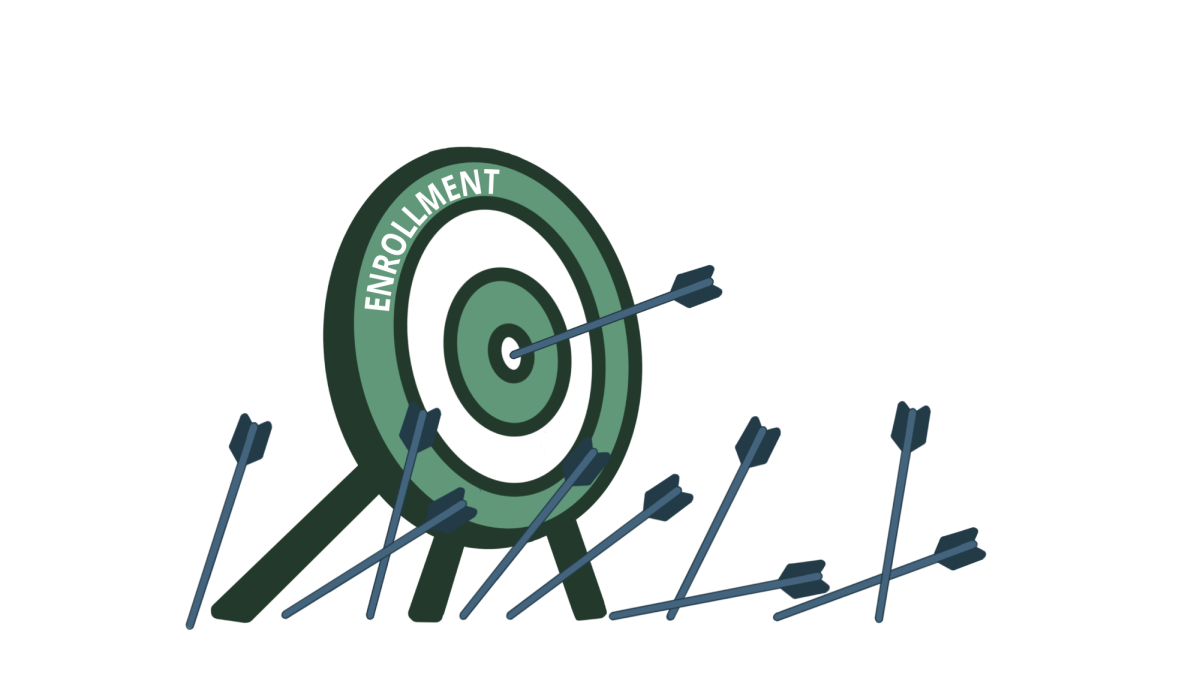Examining the Value of Online Learning: Clicking into Class
April 23, 2016
A few academic heavyweights are harnessing the power of the Internet to push for new models of education. But not everyone is convinced that e-learning can compete with traditional classrooms.
“From a financial standpoint online classes make perfect sense,” said Connor Lawrence, a senior taking his second online course at AU. “And on some levels, they make sense if you want your students to spend more time focused on their major requirements.”
Lawrence says that online courses could threaten the quality of higher education “by removing the most important entity in the university, the professor, from the equation.” He said online students miss out on back-and-forth discussions with faculty.
According to Stephanie Brookstein, AU’s assistant dean for online learning, AU currently offers fully-online, for-credit graduate programs in SOC, SIS, SPA, CAS and the School of Professional and Extended Studies. An online MBA program will be offered by Kogod beginning this fall.
“In cases where colleges are delivering something that’s not so different from a MOOC, say, lectures and multiple choice exams, I think MOOCs are a threat to that as a viable business model.”
Brookstein says fully-online courses are often a great option for people looking to optimize their schedules, as well as “introverted learners, who might not do well in a group setting or be the type of people who like to participate openly in class.”
For others, that isolation can be a negative part of online learning.
“It’s a lot easier to get distracted in the comfort of your home than the classroom at school,” said Ronald Jordan, a sophomore who took statistics online last summer. Jordan took the class in order to lighten his workload for the following semester, a move Brookstein says she’s seen many students make successfully.
Not all online education options offer academic credit, however. People can enroll in Massively Open Online Courses (MOOCs). First coming onto the online education scene in 2011, MOOCs are often taught by university professors. Some MOOCs are hosted by nonprofit and for-profit third-party sites. Anyone can enroll in any course and work through it at her own pace.
The idea of “distance learning,” or education administered beyond the confines of the classroom, is not a new one. American educators in the 1920s explored the possibility of using radio to broadcast higher education lectures across the country. However, only 20 percent of students completed these radio courses, and there was a lack of standardized accreditation. University radio broadcasts were wiped off the air by 1941.
The failure of radio courses makes some experts wary of MOOCs, which follow essentially the same model except on the Internet. A 2013 study by University of Pennsylvania researchers found that only about half of students enrolled in MOOCs view even a single online lecture and that the average completion rate is just 4 percent.
Overall, distance learning has made a comeback since the failure of radio courses, and has grown at a rapid pace. According to the most recent survey by the National Center for Education Statistics, 25 percent of undergraduate students were enrolled in at least one online course during 2012. A survey conducted by researchers at Babson College found that 32 percent of undergraduates were in enrolled in online courses in 2013.
MOOCs are intriguing players in online education because they are often organized by elite institutions but lack centralized standards. One of the most well-known MOOC hosts is EdX, a nonprofit started by Harvard University. For-profits hosts Coursera and Udacity are also popular. Most of the for-profit courses are still free, except for a select few that can cost between $30 and $100.
For all they offer in terms of esteemed educators, MOOCs lack the accreditation of traditional universities. In 2014, a Columbia University report concluded that these courses cannot yet widely assess student understanding and adapt instruction accordingly.
Eventually MOOCs will likely become more standardized, says Jane Manning, director of platforms for online learning at Stanford University, which was among the first universities to get involved with MOOCs.
“There isn’t yet a universal way for colleges to determine which MOOC tests are sufficient for counting an online course toward a major requirement, whereas with AP exams, the College Board has been delegated the responsibility of determining which courses meet these standards,” Manning said.
Once this idea of a centralized board for MOOCs becomes a reality, is it game over for traditional universities? There’s certainly a lot of appeal in being able to select classes a la carte. Nonetheless, Manning doesn’t think traditional universities will become extinct.
“In cases where colleges are delivering something that’s not so different from a MOOC—say, lectures and multiple choice exams—I think MOOCs are a threat to that as a viable business model,” she said. “But as long as schools are encouraging things like student and professor interactions, and working together to learn, MOOCs can’t really compete with these aspects of a college education.”
Brookstein also sees significant advantages of accredited online courses from traditional schools over MOOCs.
“Our graduate programs [at AU] strive to prepare people for the workforce, and right now the workforce is recognizing our programs, not MOOCs,” she said.“But could [MOOCs be a threat] in the future? Sure.”


